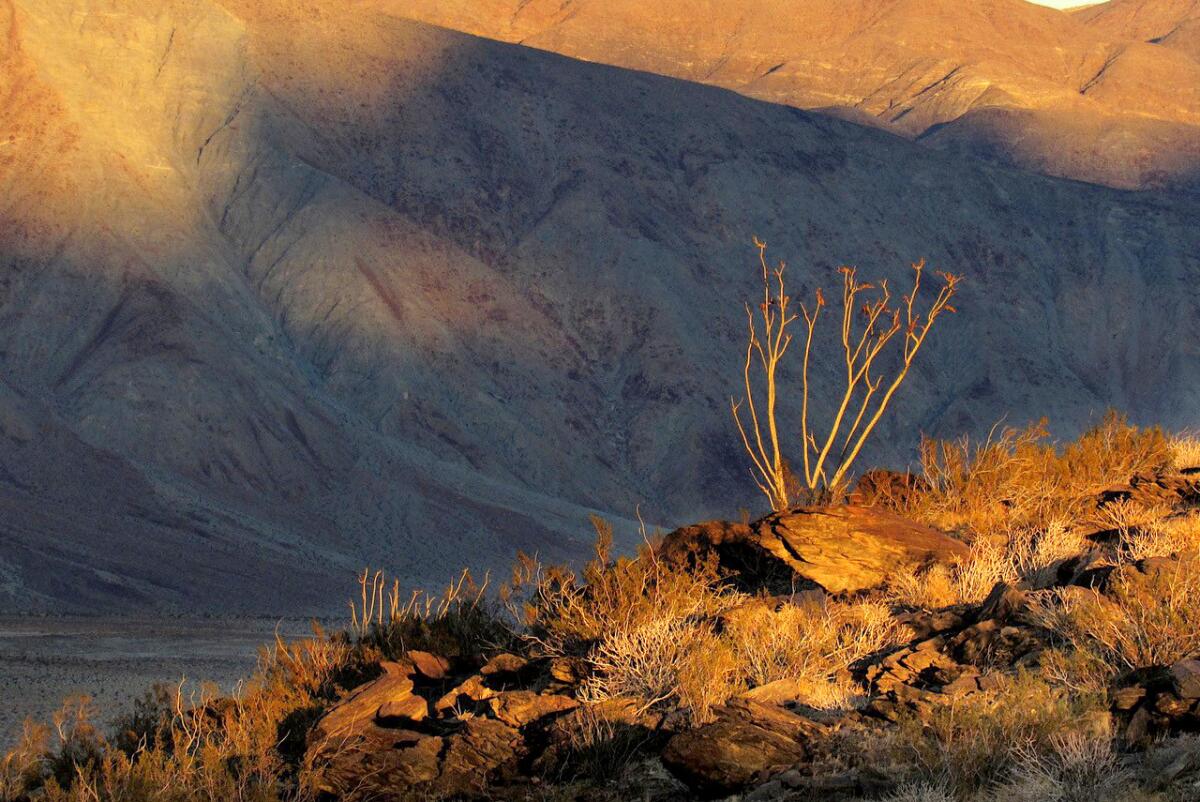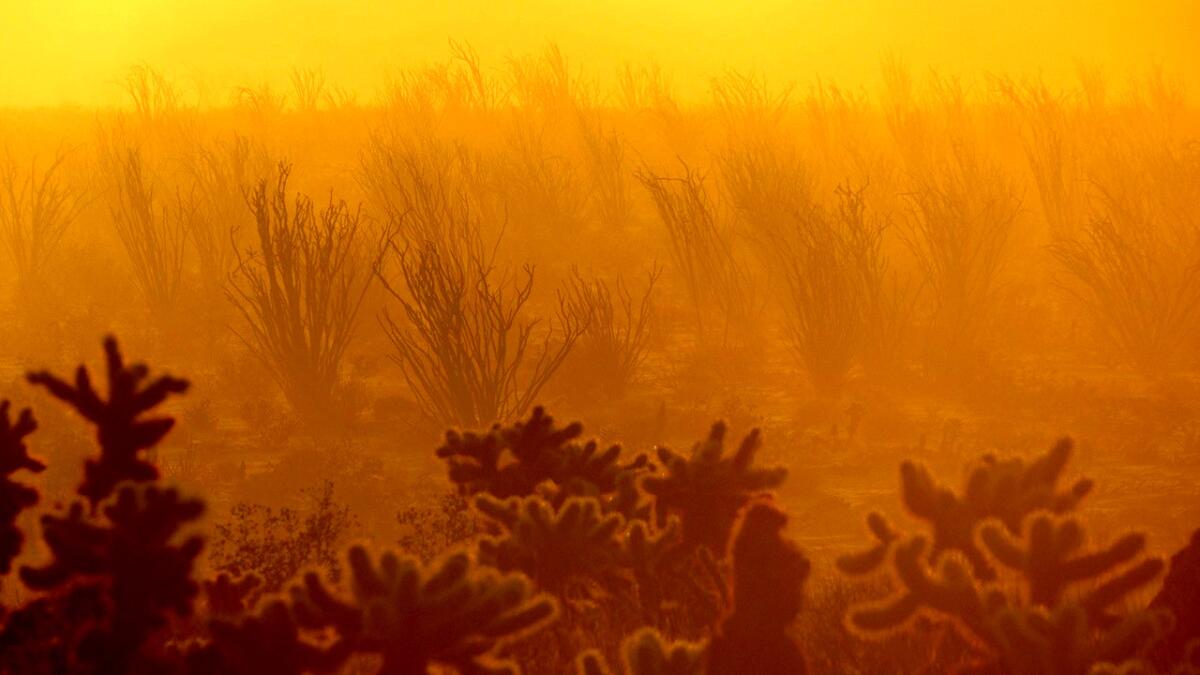Climate change causing ‘striking loss’ of plants in Southern California’s deserts and mountains

Climate change is causing plants to die off in massive numbers in Southern California’s deserts and mountains, UC Irvine researchers have found.
With rising temperatures and varying rainfall, a recently published study found that between 1984 and 2017 vegetation has decreased by 35% in the region’s deserts and has declined by 13% in the mountains.
Over the years, scientists have hoped that desert plants were better equipped to withstand climatic shifts because they have drought-tolerant features.
Stijn Hantson, lead author of the study, said that desert plants already exist in an extreme climate, so any shift could be dramatic.
“The plants are really at the border in the desert, and it’s easy to push them over,” Hantson said in a phone interview. “It’s really hard for plants to live there, so they’re already really stressed out. So if you stress them out a bit more, you can push them over their limit that they can tolerate.”

Researchers found that the vegetation loss in the region’s mountains are less extreme due to more rain — the Santa Rosa Mountains on average receive about 770 millimeters of precipitation each year, while deserts have as little as 73 millimeters, according to UC Irvine.
The plant die-offs also affect animals that rely on the vegetation for food and habitation.
“There are pretty big changes taking place, which will have cascading impacts on other animals,” Hantson said.
For the study, researchers examined data from a Landsat satellite mission of about 5,000 square miles of the Sonoran Desert, including Anza-Borrego Desert State Park. The satellite mission is part of a long-standing NASA program to monitor changes in Earth’s landforms.
The study was funded by Anza Borrego Desert State Park, the California Strategic Growth Council and the UC National Laboratory Fees Research Program.
Researchers will continue to monitor vegetation loss at Anza-Borrego.
Climate change’s impact on deserts is also being documented at Joshua Tree National Park, where ecologist Jim Cornett is studying the decline of the Joshua tree. Earlier this month Cornett told L.A. Times columnist Steve Lopez that the national park will lose many of its titular trees due to climate change.
All the latest on Orange County from Orange County.
Get our free TimesOC newsletter.
You may occasionally receive promotional content from the Daily Pilot.




